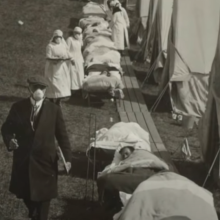
Quilting Cotton Face Masks Better Than Bandanas
Well-fitted homemade masks with multiple layers of quilting fabric and off-the-shelf, cone-style masks reduced respiratory droplets the best, the researchers wrote. SARS-CoV-2, the virus that causes COVID-19, is spread through respiratory droplets when people sneeze, cough, talk and sing.
“Promoting widespread awareness of effective preventive measures is crucial at this time as we are observing significant spikes in cases of COVID-19 infections in many states, especially Florida,” Siddhartha Verma, PhD, the lead author and a Florida Atlantic University professor, said in a statement.
In a lab, the research team used laser light and synthetic fog to visualize how far droplets travel from a mannequin’s mouth during simulated coughing and sneezing. They tested bandanas, homemade masks with two layers of cotton quilting fabric, loosely folded homemade masks made from a handkerchief or T-shirt, and cone-style masks available at most pharmacies.
They found that loosely folded face masks and bandanas stopped droplets to some degree, but well-fitted homemade masks with multiple layers and cone-style masks were much better. Masks with multiple layers and off-the-shelf masks still had some leakage through the material and along the sides of the mask, but they reduced the speed and range of droplets, the researchers wrote.
With a bandana, respiratory droplets traveled about 3 feet, 7 inches. With a folded cotton handkerchief, they traveled a little over a foot. With a cone-style mask, droplets traveled 8 inches, and with a stitched quilting cotton mask, droplets traveled 2.5 inches.
The research team also found that droplets from uncovered coughs traveled more than the recommended 6-foot physical distancing guidelines. Without a mask, droplets traveled more than 8 feet. In some cases, they traveled up to 12 feet within 50 seconds and could remain in the air for up to 3 minutes in the calm lab environment.
“The visuals used in our study can help convey to the general public the rationale behind social-distancing guidelines and recommendations for using face masks,” Verma said.







